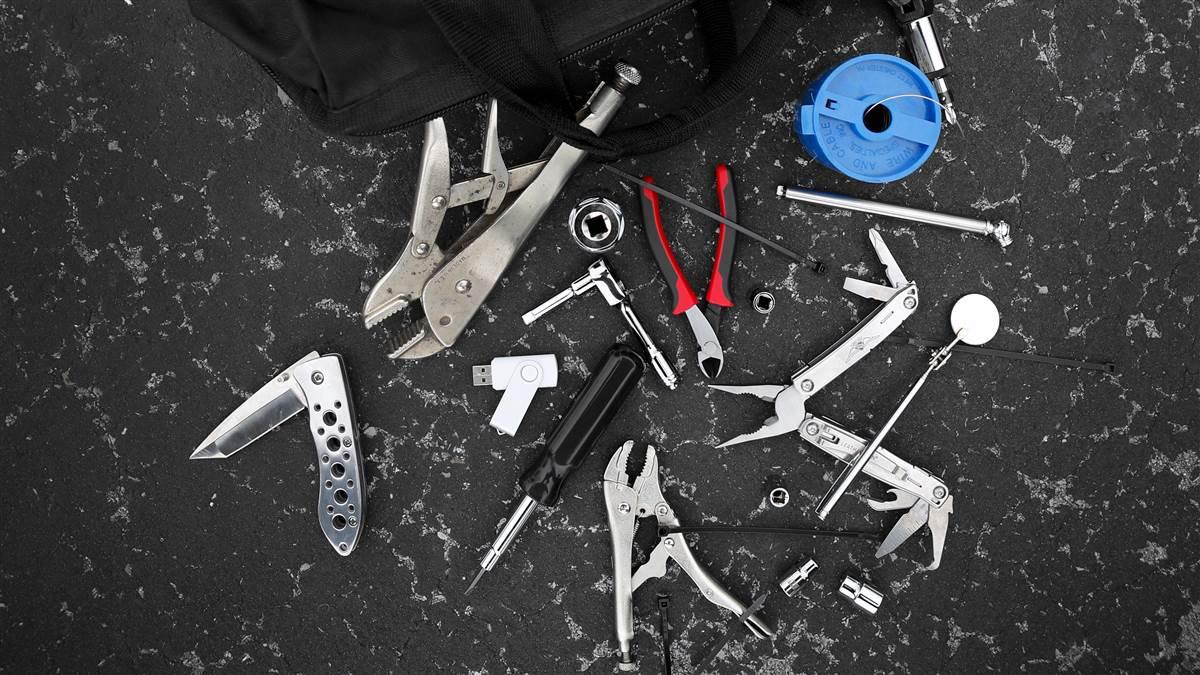
Opinion: Traveling tool kit
What do you carry in your airplane

I’m talking about several kinds of “stuff”—service information, a survival tool kit, and spare parts and supplies. I fly lots of long-range missions in my airplane, and I always carry quite a bit of such stuff with me. It has bailed me out of trouble more times than I care to count.
Service information
Service information is perhaps the most important thing to carry. If you have a mechanical problem on a weekend and are lucky enough to find an A&P to help you, he cannot legally work on your airplane without the maintenance manual for your make and model. If it turns out that he needs to order a part to get you back in the air, he’ll also need access to the illustrated parts catalog for your make and model to figure out the part number.
Maintenance manuals and illustrated parts catalogs tend to be big, heavy loose-leaf binders. Your best bet is to do what I do: Get a digital copy of your airplane’s maintenance manual and illustrated parts catalog, and stash it in the airplane’s glovebox or a seatback pocket. Most aircraft manufacturers offer digital versions of their service documents nowadays, and it may also be available from third-party sources. (For example, if you fly a Cessna, check out McCurtain Technology Group at www.mccurtaintg.com.) It’s also not a bad idea to upload your digital maintenance manual and illustrated parts catalog to the cloud so you can access it from anywhere using your laptop or smartphone.
It’s also helpful to have a list of important phone numbers and email addresses you might need. Make sure you have the phone numbers for your A&P mechanic: work, home, mobile, and maybe the pub where he hangs out on Friday nights. If you belong to an aircraft type club (and you should), make sure you have the club’s tech-support hotline number handy. Also, contact information for your favorite parts suppliers.
What about your aircraft’s maintenance logbooks? Never carry them in the airplane! The NTSB doesn’t want you to, because if you crash they don’t want the logbooks to be damaged or destroyed. Your aviation attorney doesn’t want you to, because if you’re ramp checked he doesn’t want the FAA inspector to have access to your logbooks until you’ve had a chance to make sure all the i’s are dotted and t’s crossed. I don’t want you to, because I’ve seen too many cases where shops have held an owner’s logbooks hostage during an invoice dispute. So keep your maintenance records at home in a safe place, and have any necessary logbook entries made on self-adhesive stickers you can paste into your logbooks when you get home.
Survival tool kit
Creating a survival tool kit to carry in the airplane is an exercise in minimalism. A decent aircraft mechanic’s toolbox weighs 400 to 600 pounds and stands five feet tall. In the airplane, you can take only what you think you might need to get home, and nothing more. A survival tool kit has to be light and tight.
The roll-around toolbox I have in my hangar contains 30 different screwdrivers plus two cordless screwdrivers. The survival tool kit I carry in my airplane has only two: a ratcheting screwdriver handle with interchangeable tips, and a stubby #2 Phillips driver for working in tight quarters.
Likewise, my home toolbox has four entire drawers full of wrenches: sockets, box wrenches, open-end wrenches, offset wrenches, cylinder wrenches, obstacle wrenches, and so on. My survival tool kit makes do with a basic socket set (one-quarter-inch and three-eighths-inch drive) and combination wrench set (one-quarter-inch through three-quarters-inch), supplemented with an adjustable wrench and vise-grip pliers. A few other pliers (regular, needle-nose, diagonal cutters) round out the collection.
In addition to these basics, the most important tools to carry are specialty tools that might be hard to procure locally at a hardware store. Things such as an aircraft spark plug socket and a pair of safety wire pliers. My survival kit also has a wrench designed specifically for removing and installing vacuum pumps (since my airplane seems to have a ravenous appetite for those).
You should tailor your survival tool kit to meet the needs of your particular aircraft, and to conform to your own mechanical aptitude and ambition. How comfortable are you wrenching on your airplane? Do you do your own oil changes? Do you replace your own spark plugs? Because I’m an A&P and fly a complex piston twin, I probably carry more stuff in my survival tool kit than you might want to carry in yours.
Once you figure out what to carry, the next question is what to carry it in. I suggest you avoid traditional metal toolboxes; they’re heavy, and can dent or scratch your airplane (or your toe). I like plastic toolboxes from Stack-On (available at Lowe’s, Wal-Mart, and Amazon.com). I carry two of these in my airplane: one for tools, and the other for parts and supplies. Another good choice is a “fishmouth” canvas toolbag (available from Klein Tools, among other sources).
Parts and supplies
I bought my first airplane in 1968, a brand-new Cessna 182, and traveled in it a lot, including making a transcontinental trip at least once a year. The Skylane proved to be a very reliable airplane with one exception: It had an old-fashioned mechanical voltage regulator that it “ate” on a regular basis. After the third time I spent the night on a hard airport bench, I decided to buy a spare voltage regulator and carry it in the baggage compartment. Guess what? The airplane never ate another regulator for the rest of the time I owned it. I’m convinced that when you carry spare parts with you in the airplane, they radiate some sort of protective force field that keeps their brethren healthy.
My Skylane had a belt-driven alternator, so I also carried a spare alternator belt, which doesn’t weigh much or consume much space. I figured it might come in handy someday, but my airplane seemed to know I was carrying a spare, and so I wound up never needing it.
The Cessna 310 I’ve been flying for 30 years uses solid-state regulators that never seem to give any trouble, so I don’t carry a spare. But my 310 likes to eat vacuum pumps, usually when I’m far from home and dealing with IMC. Because my airplane has deice boots, it uses the big, expensive 400-series vacuum pumps maintenance shops almost never keep in stock. So I carry a spare pump and the special wrench needed to change the pump under battlefield conditions. I also carry a couple of spark plugs; landing, taxi, nav, and post-light lamps; and some fuses.
I carry some strategic supplies: tie-wraps, duct tape, a tube of RTV sealant, a vial of super glue, a length of .032-inch safety wire, some 20-gauge hookup wire, and a crimp terminal kit. Also a few chemicals: spray lubricant, contact cleaner, windshield cleaner, and Simple Green. (There’s not much that can go wrong with an airplane that can’t be fixed at least temporarily using tie wraps, duct tape, safety wire, and locking pliers.)
Mini-tool kit for the cockpit
I also carry a mini-tool kit in my airplane glovebox for in-flight use, and it has saved the day for me on numerous occasions. It includes a Leatherman multitool, a miniature locking plier, a jeweler’s screwdriver, some Allen wrenches (for removing/installing tray-mounted avionics and tightening knob setscrews), a small adjustable wrench, a folding pocket knife, a small LED flashlight—and, of course, a supply of tie wraps and duct tape.
You probably don’t want to carry as much “stuff” in your airplane as I do in mine, but you should think about what you do want to carry. You just might thank me next time you find yourself stuck in the middle of nowhere on a Friday night.
Mike Buschis an A&P/IA.
Email [email protected]



